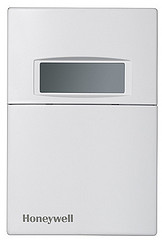
 In today’s digital age, wireless communication technology is a staple found throughout every industry. Those in facilities management are equipping new and existing structures with building automation system (BAS) solutions that use wireless zone sensors equipped with direct digital control (DDC) technologies. These devices monitor and communicate with various building systems, such as commercial heating and cooling units. While a BAS may seem like an unnecessary modern upgrade, many find the benefits to be a compelling argument.
In today’s digital age, wireless communication technology is a staple found throughout every industry. Those in facilities management are equipping new and existing structures with building automation system (BAS) solutions that use wireless zone sensors equipped with direct digital control (DDC) technologies. These devices monitor and communicate with various building systems, such as commercial heating and cooling units. While a BAS may seem like an unnecessary modern upgrade, many find the benefits to be a compelling argument.
Advantages of Wireless Zone Sensors for Commercial Heating and Cooling Systems
- Cost Savings: It costs less to design, plan and place wireless zone sensors for commercial heating and cooling systems than to install a hard-wired system. Because the system doesn’t require the installation of wires or the need to penetrate walls, you experience decreased labor costs, clean-up costs, and negative impacts on indoor air quality during the installation. BAS solutions are generally less expensive to maintain and operate. The system also contributes to operating cost savings and life cycle energy efficiency because the sensors are in locations where they have the greatest effectiveness and efficiency.
- Simpler, shorter installation and implementation: With new construction projects, BAS technologies are simpler to install than traditional hard-wired applications. In a new project, it may be difficult for an engineer to know exactly where to place hard-wired zone sensors in a building, especially if he doesn’t know where others will place equipment, such as photocopy machines. In existing buildings, BAS technologies are easy to design and set up because technicians only need to attach the system to walls or ceilings. This eliminates the need to install or penetrate building materials to pull, test and repair wires within the walls. Facility managers can also easily relocate wireless zone sensors when a building undergoes a reconfiguration or remodel because they can re-position the wireless sensors accordingly. Learn why AAA Heating & Cooling should be your installer.
- Simpler to troubleshoot and relocate: When there is a problem with a hard-wired solution, you may have to temporarily shut down the network to look for and cut bad wires hidden behind walls. With BAS solutions,
 theapplication uses multiple wireless data paths that are more reliable and simpler to reconfigure or troubleshoot using a computer. Technicians can place the wireless zone sensors almost anywhere because they aren’t constrained by wire locations and lengths, and can relocate them to improve data collection when necessary. In hard-wired solutions, sensor relocation can take up to 90 minutes per zone. The same task takes less than 15 minutes with wireless sensors, a time savings that is particularly beneficial for industries that cannot shut down operations, such as hospitals or schools.
theapplication uses multiple wireless data paths that are more reliable and simpler to reconfigure or troubleshoot using a computer. Technicians can place the wireless zone sensors almost anywhere because they aren’t constrained by wire locations and lengths, and can relocate them to improve data collection when necessary. In hard-wired solutions, sensor relocation can take up to 90 minutes per zone. The same task takes less than 15 minutes with wireless sensors, a time savings that is particularly beneficial for industries that cannot shut down operations, such as hospitals or schools.
- Detect true conditions: With hard-wired zone sensors, it is not unusual for parts of a building to feel colder or hotter than others. Conversely, those with BAS solutions feel more comfortable because the sensors are simple to relocate, allowing you to place them in strategic areas so they detect the true conditions within a building. This is particularly beneficial, for example, in buildings with rooms that the sun warms. The sensors detect the natural heat gain and adjust the commercial heating and cooling system accordingly. Similarly, in rooms that have devices that generate heat, like photocopiers, you can easily move a sensor away from the equipment so the HVAC doesn’t overly cool the room and waste energy. A BAS solution ultimately allows you to enhance a building’s comfort and reduce its energy needs.
Whether you’re working on a new construction or retrofit, BAS technologies help reduce operational and energy costs while maximizing the comfort of the occupants inside. We, at AAA Heating & Cooling specialize in the installation of wireless zone sensors that give you flexible comfort control at the touch of a button. Contact us to learn more.
[Photo from US CPSC via CC License 2.0]